Walking tour of Brisbane (Part 1): Parklands, City Hall and ANZAC
Bill Dennison ·Brisbane is hilly, and I like to start a tour at a high point and work my way down. The Old Windmill on Wickham Terrace is a great place to start for that reason. Another reason for starting here is the fact that the Old Windmill is aptly named, as it is the oldest surviving building in Brisbane, dating back to 1824. It was originally built by convicts for grinding grains, but was subsequently used as a place to hang criminals, as a museum, and as a weather observatory. The view of downtown Brisbane (or lack thereof) is worth noting, as there is an historic photo displayed at Parliament House of the view of Brisbane in which the entire bend of the Brisbane River is visible.
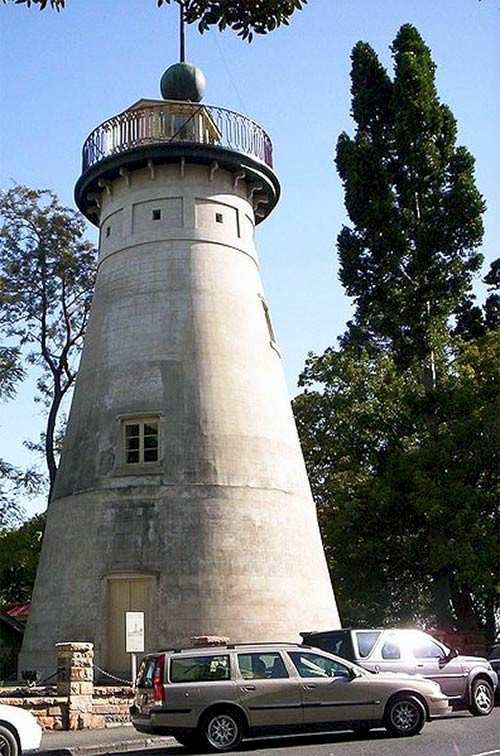
Walking down to the Roma Street Parkland and entering the Spectacle Garden from the information booth at the top provides several options for pathways to the 'Hub' in the center of the Parkland. Within the Spectacle Garden, you can see creative topiary, colorful flower beds, lots of lizards, waterfalls, interesting sculptures, and nice views. From the Hub, walking toward the Albert Street bridge, you can walk over to King George Square, between Ann and Adelaide Streets, which provides a grand front patio for Brisbane City Hall.
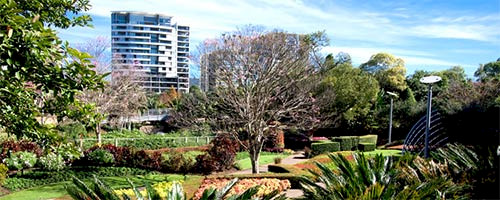
King George Square was named after King George V in 1936 and there is a statue of King George V on a horse and two bronze lions that guard the entrance to City Hall which commemorate the King. There are several interesting statues in the square, and a unique 'Watersense Garden', in which drought resistant plants are used instead of running water in accordance with the drought prone climate of the region. There are several statutes of famous Queenslanders in 'Speakers Corner': the author Steele Rudd, the labor organizer Emma Miller and Premier Sir Charles Lilley. The Petrie Tableaux sculpture/statue depicts Thomas Petrie, one of the early European settlers of the region who wrote wonderful early accounts.
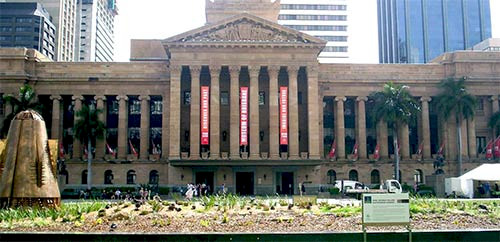
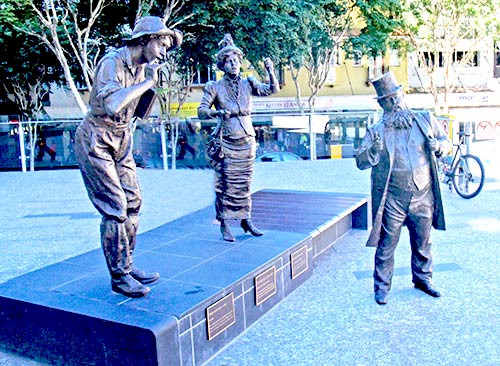
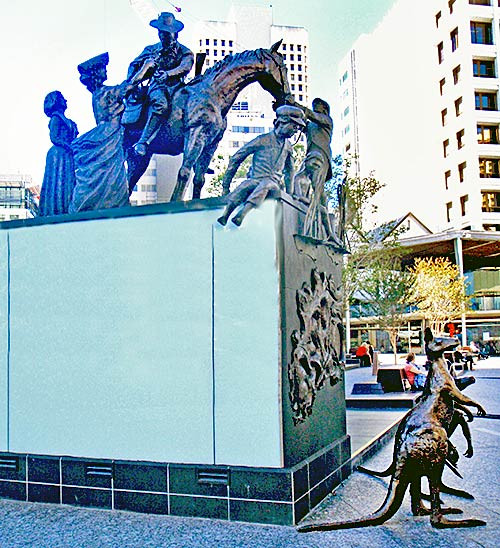
Brisbane City Hall was completed in 1930 and is undergoing extensive structural renovations that are scheduled for completion at the end of 2012. City Hall has a beautiful tall clock tower modeled after the one in St. Mark's Square in Venice, Italy. For many years, the clock tower was the highest structure in Brisbane, and there is an observation level above the clocks when City Hall reopens. There are Westminster Chimes that ring every fifteen minutes. There is an interesting scene carved into the stone over the main entrance which contrasts aborigines and kangaroos with Europeans and sheep. When City Hall reopens, it has a gorgeous large auditorium modeled after the Pantheon in Rome which includes a huge pipe organ and a nice little Museum of Brisbane.
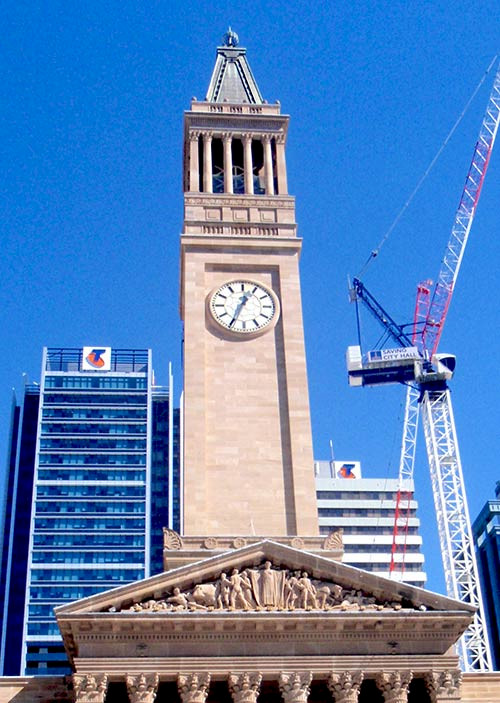
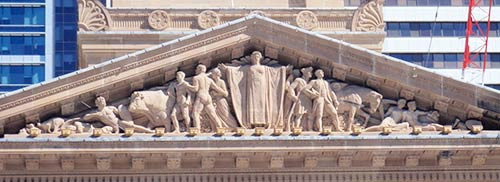
Walking up Ann Street, the temporarily relocated Museum of Brisbane is worth a visit (free and small). There currently is a nice exhibit of Brisbane paintings by Robert Brownhall. Further up Ann Street, across the street from the circular Anzac Shrine of Remembrance with an eternal flame, is Central Station, a train station built in 1901 and still operating.
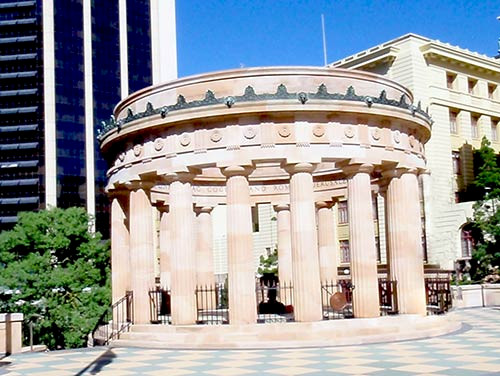
ANZAC stands for Australia and New Zealand Army Corps and ANZAC Square is between Ann and Adelaide Street, commemorating the men and women who participated in overseas armed service. ANZAC Day is a national holiday, celebrated on April 25. The Shrine of Remembrance, dedicated in 1930, has names of famous battlefields inscribed on the inside and is constructed with Helidon sandstone, the same building material used in the Great Court of the University of Queensland. The eighteen columns symbolize 1918, when the armistice was signed. Underneath the WWI shrine is an exhibit of WWII Shrine of Memories.

At this point, you can walk up Ann St. several blocks to see St. John's Cathedral, a large Anglican church with some interesting features. St. John's Cathedral, which was built beginning in 1906 recently completed a twenty year construction project. The stained glass is worth a look, particularly the contemporary Millennium window and the two American/Australian fellowship windows, but also the biological carvings in the overhang just outside the front doors. The front doors, looking out over Cathedral Square and back through the cathedral make a nice viewing point.
This is the first of three posts on the Brisbane Walking Tour
The other two posts are:
2. Walking tour of Brisbane (Part 2): Financial district, riverside and botanic gardens
3. Walking tour of Brisbane (Part 3): Parliament, World War II and beyond
About the author
Bill Dennison

Dr. Bill Dennison is a Professor of Marine Science and Vice President for Science Application at the University of Maryland Center for Environmental Science.